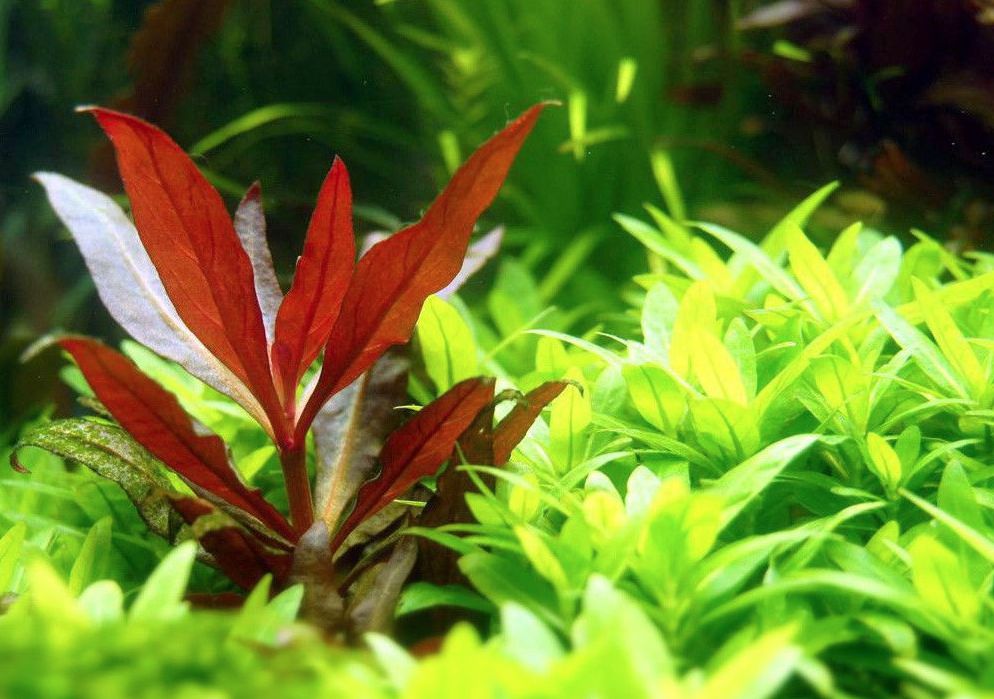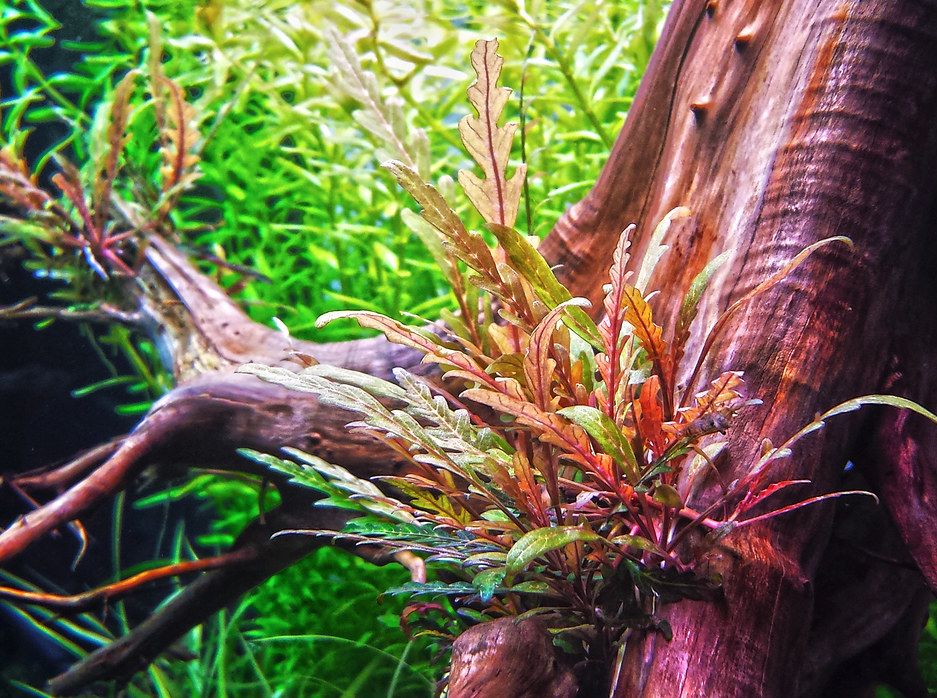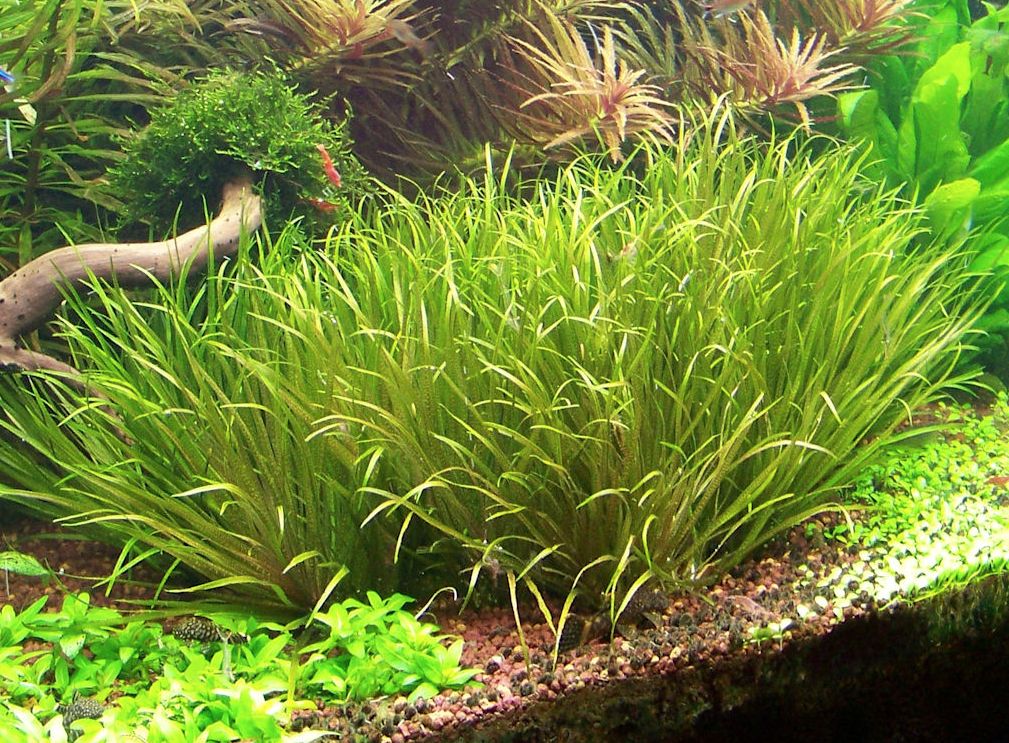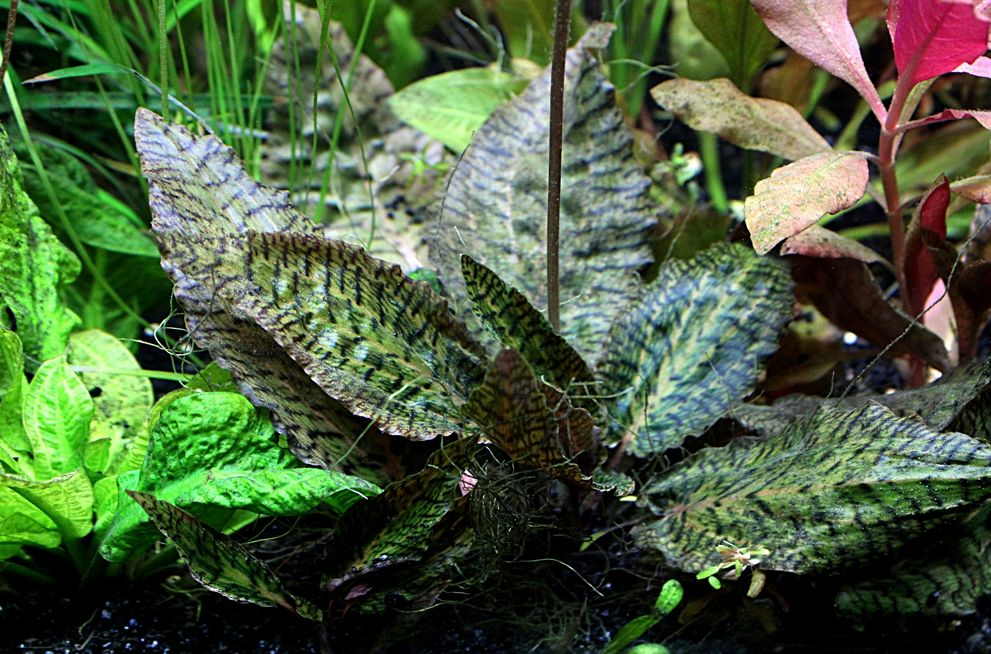Alternanthera reineckii is a very appealing long-stalked plant with the leaves which color varies from rose-red to dark-violet. Its shoots trailing along the water surface can be quite long. The plant looks great as part of various aquascapes and as a rule it is used as a focusing point. In its habitat Alternanthera reineckii and its dwarf form called ‘mini’ grow as a paludal plants, but under the conditions of mild climate they are grown only in tanks.



